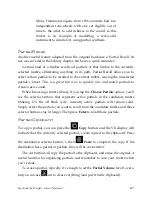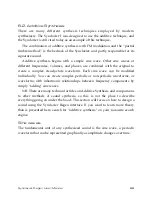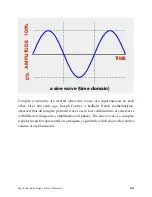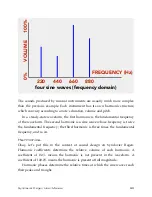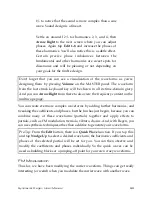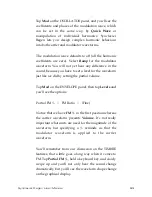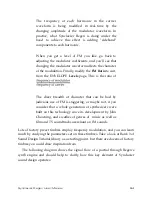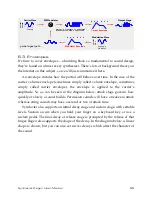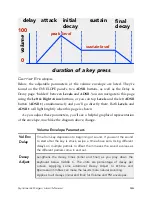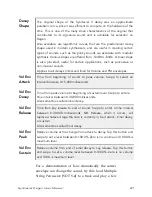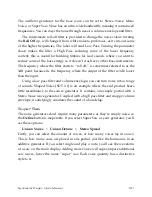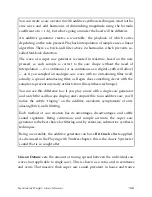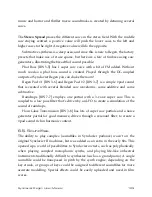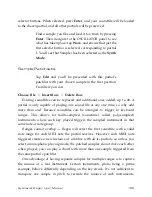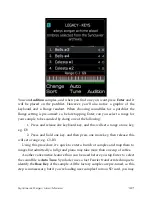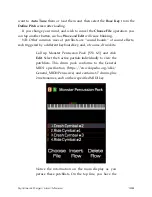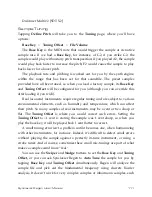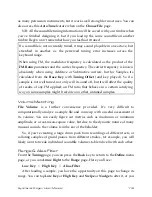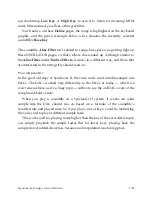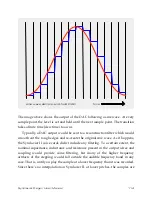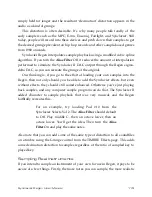
Synclavier Regen User Manual
101
The oscillator generator for the base wave can be set to Stereo Noise, Mono
Noise, or Super Saw. Noise has an ultra-wide bandwidth, meaning it contains
all
frequencies. You can
shape
the noise through use of a volume envelope and filter.
The multi-mode roll-off filter is provided to change the noise colour; turning
the
Roll Off
up, will change it from white noise to pink noise, as it cuts out some
of the higher frequencies. The label will read Low Pass. Turning the parameter
down makes the filter a High Pass, reducing some of the lower frequency
content; this is useful for building timbres for lead sounds where you want to
reduce some of the bass energy so it doesn’t crash over other bass instruments.
The frequency where the filter starts to “roll off,” is sometimes referred to as the
3dB point, because its the frequency where the output of the filter is 3db lower
than the input.
Using a low pass filter and volume envelope, you can turn noise into a range
of sounds. Shaped Noise [SDT 2-1] is an example where the end product bears
little resemblance to the source generator. It contains one simple partial with a
Stereo Noise wave generator. Coupled with a high pass filter and snappy volume
envelope, it satisfyingly simulates the sound of a hand clap.
Super Saw
The noise generators don’t require many parameters, as they’re simply noise, so
the
Define
button is inoperable. If you select Super Saw as your generator, you’ll
see these options:
Unison Voices | Unison Detune | Stereo Spread
Firstly, you can select the amount of voices, or how many voices lay in
unison
.
This is how many saws are placed in one partial, just like the harmonics in an
additive generator. If you select single and play a note, you’ll see the waveform
of a saw on the main display. Adding more voices will super-impose additional
saw waves, hence the name “super” saw. Each voice quantity has a distinctive
style to it.

